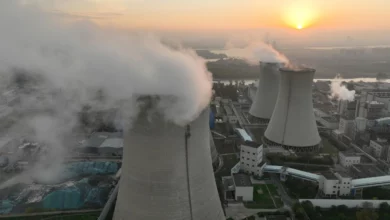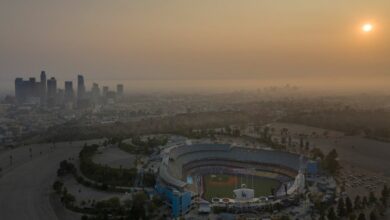According to the Air Pollution Early Warning System Unit of the Egyptian Environmental Affairs Agency (EEAA), the "black cloud" season is underway.
Yesterday's EEAA daily pollution forecast report revealed indications of the start of the season. The "black cloud" first appeared in the autumn of 1999 and has been an annual phenomenon ever since. It is caused by a combination of both natural and man-made factors.
The natural factor is a meteorological occurrence termed "thermal inversion," whereby a warm air cap forms over Cairo. This air cap neither rises nor dissipates, trapping the air pollution rather than allowing it to disperse.
Man-induced factors include industrial pollution, as Cairo houses an estimated 12,600 factories, and transportation–the approximate number of vehicles on the streets of Cairo has surpassed the four million mark and is increasing at an annual rate of ten percent.
In addition, the burning of rice straw, which takes place every autumn, exacerbates the problem, especially in conjunction with the open-air burning of garbage, due to the lack of an adequate solid waste management system.
According to Minister Maged George, “burning rice straw accounts for six percent of Egypt's air pollution throughout the year, but during the rice harvesting season this figure jumps to 45 percent."
During the past few years the government has been working to introduce measures to address the "black cloud" phenomena specifically and air pollution in general. Measures have included promoting the use of natural gas as fuel for vehicles, factories and power plants, and encouraging the recycling of rice straw instead of disposal through burning.
One such project is the Community Environment Action Project (CENACT), undertaken in collaboration with the Canadian International Development Agency (CIDA) and the EEAA, and launched several years ago in Ismailia and Minya. CENACT aimed to recycle rice straw and other agricultural waste into compost.
Yet despite these efforts the cloud still continues to appear and air pollution in general seems to be getting worse. Measures in place are insufficient, and in any case most lack proper enforcement.
Yesterday's EEAA report indicates wind speeds and the "thermal inversion" layer are now reaching low values from after sunset, peaking between 1 AM until 6 AM. These indicators mark the start of this year's black cloud season.




